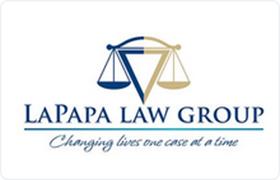East Moline Felony Lawyer, Illinois
Sponsored Law Firm
-
 x
x

Click For More Info:
-
LaPapa Law Group
10704 S Western Ave Chicago, IL 60643» view mapAccident & Injury Law, Criminal Defense Changing Lives One Case At A Time
At LaPapa Law Group, we understand that life doesn’t always go as planned. We have the knowledge and experience needed to competently represent you in court.
800-694-2681
Not enough matches for East Moline Felony lawyer.
Below are all East Moline Criminal lawyers.
Andrew M. Larson
✓ VERIFIED *Status is reviewed annually. For latest information visit hereCriminal, Real Estate, Estate
A Quad City native, Andrew takes pride in helping common people with their legal concerns. We are not a big, stuffy law firm looking to retire on a cl... (more)
Aaron Dyer
Traffic, Divorce & Family Law, Criminal, Civil & Human Rights
Status: In Good Standing *Status is reviewed annually. For latest information visit here Licensed: 22 Years
William Laird
Criminal, Estate Planning, Transactions, Traffic, Real Estate
Joseph Franklin Fackel
Traffic, Transportation & Shipping, Criminal, Accident & Injury
Status: In Good Standing *Status is reviewed annually. For latest information visit here Licensed: 62 Years
Dennis Albert De Porter
Criminal, Traffic
Status: In Good Standing *Status is reviewed annually. For latest information visit here Licensed: 54 Years
 Gregory R. LaPapa Chicago, IL
Gregory R. LaPapa Chicago, IL Practice AreasExpertise
Practice AreasExpertise
